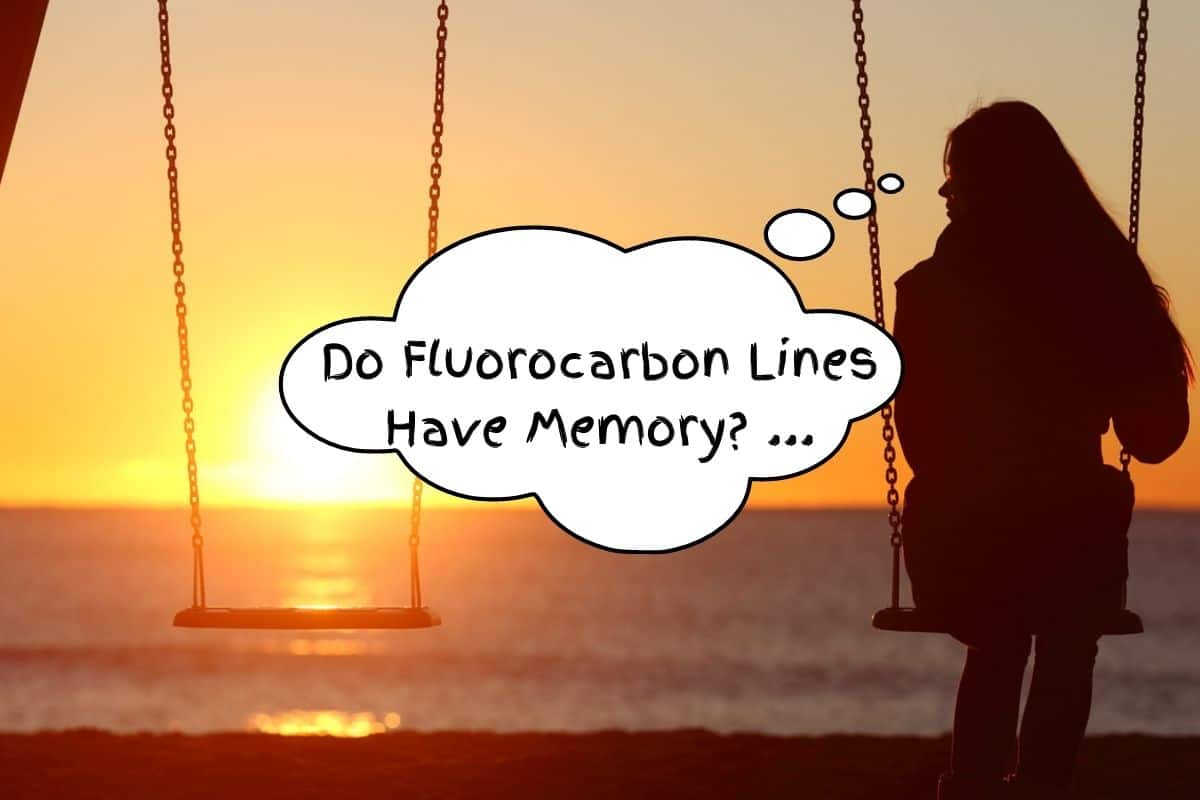Do Fluorocarbon lines have memory? Line memory is something that I have encountered many times in the past when using fluorocarbon lines. I honestly didn’t even know a word describing the phenomenon. Fortunately, there are ways to resolve the line memory issues without much fuss.
Fluorocarbon lines are made from PVDF, making them prone to develop line memory. Fluorocarbon line memory is treatable by stretching or warming the line in hot water. Using line conditioners can also reduce memory.
Fluorocarbon line memory can be challenging. Fortunately, tried and tested ways of reducing line memory are available. Alternately, buying a low-memory fluoro line may be the answer for you.

How To Tell If Your Fluorocarbon Lines Have Memory?
Fluorocarbon line memory is noticeable as the line coils, like a corkscrew, when not under tension. The coils of the line fall off the reels spool when the line is slack.
Line memory occurs because the line takes the shape of the spool or reel that it’s wound onto. When casting, the line tries to retain the shape of the spool resulting in the coils. This creates resistance as it passes through the rod guides, which reduces your casting distance.
The springiness of the line also comes into play, particularly when a new line is wound onto a reel.
When the reel’s spool is smaller than the bulk spool, the line tries to return to the coil size of the bulk spool when the line is released. This can result in multiple coils spilling from the spool simultaneously, causing the line to knot.
Why Does Fluorocarbon Line Have Memory?
Fluorocarbon lines are manufactured from a very dense material called Polyvinylidene difluoride (PVDF). An unfortunate by-product of PVDF materials causes line memory.
If a casual angler stores angling equipment in the winter will experience more line memory issues than a frequent angler who uses the line every couple of days. Preventing the line from being stored too long is vital.
Polymers are prone to stimulation by external factors such as tension, temperature, humidity, etc.
External stimuli affect different materials in different ways. As far as fluorocarbon lines are concerned, tension and temperature play a significant part in the formation of line memory.
When the line is stored for a long time, you will most likely find some memory showing in the line when fishing again. The lack of use causes the line to settle into its environment, such as wound onto your reel’s spool.
Modern fluorocarbon lines are resistant to line memory due to the line materials being made more pliable. The traditional, leader line only, fluorocarbon was adapted as the main fishing line.
Techniques Used To Remove Line Memory
The following techniques are well proven to use when removing memory from your fluorocarbon fishing line.
Stretching The Line To Remove Memory
Attach the end of the line to a solid object or ask a friend to walk out your estimated casting distance.
Apply moderate tension to the line for a few seconds, repeating once or twice, then reel the line back onto the reel. While reeling, run the line between your thumb and index fingers to ensure the line is not loosely spooled onto the reel.
Hot Water To Remove Line Memory
You can heat the line, relaxing the naturally stiff fluorocarbon line. This process is good to do when a new fluorocarbon line is spooled onto your reel. Place the reels spool containing the fluorocarbon line into hot water (not boiling) for a few minutes.
Hot water relaxes the line and will not damage it. The heat will remove the tension in the line and effectively resets the shape of the molecules within the line to the shape of your reel spool without promoting the formation of line memory.
Use Line Conditioner To Remove Memory
The easiest way to improve the handling castability and reduce line memory is the regular use of a line conditioner. While spooled on the reel, give your line a few sprays the night before your fishing trip, or even while you’re out fishing makes a world of difference.
Fishing line conditioners are formulated to make the line texture smoother, relax the line and reduce friction on the line surface. These factors all combine to ensure you can cast further and that your fluoro line will last longer.
The following are popular line conditioner brands and are readily available:
- Ardent Line Butter Conditioner
- KVD Conditioner
- FC Line Conditioner
- Reelsnot Line Conditioner
- Reel Magic
- D-Funk
The following Fluorocarbon lines below are listed from most to the least memory.
| Product Name | Pros | Cons | Pricing Range |
|---|---|---|---|
| Senma Fluorocote | – Low Visibility – Abrasion-resistant – Water & UV Resistant | – Knot Strength – Stretchy – Stiffer line | Budget-Friendly |
| RUNCL PowerFluoro | – Good abrasion-resistance – Good leader or mainline | – Average knot strength and flexibility – Stiff – Stretchy | Budget-Friendly to the middle of the road |
| Seaguar InvizX | – Good knot strength – Very Low Visibility – Resin-based – Abrasion-resistant – Water & UV Resistant. | – Stretchy – Stiffer line | Middle of the road to Premium |
| Sunline Super FC Sniper | – Very abrasion resistant – Triple resin coating for soft handling – Uniform diameter | – More stretchy than nylon mono – Price | Premium |
| Kastking FluoroKote | – Co-polymer – Pliable – Good abrasion resistance – Low stretch – Low visibility | – Average knot strength | Middle of the road |
| ANGRYFISH Fluorocarbon line | – Excellent sensitivity – Low stretch – High abrasion resistance | – Average knot strength – Replace annually | Middle of the road |
| Seaguar Red Label | – Good Tensile Strength – Abrasion-resistant – Clear in colour – Low stretch | – Stiffer line – Average knot strength | Budget-Friendly |
